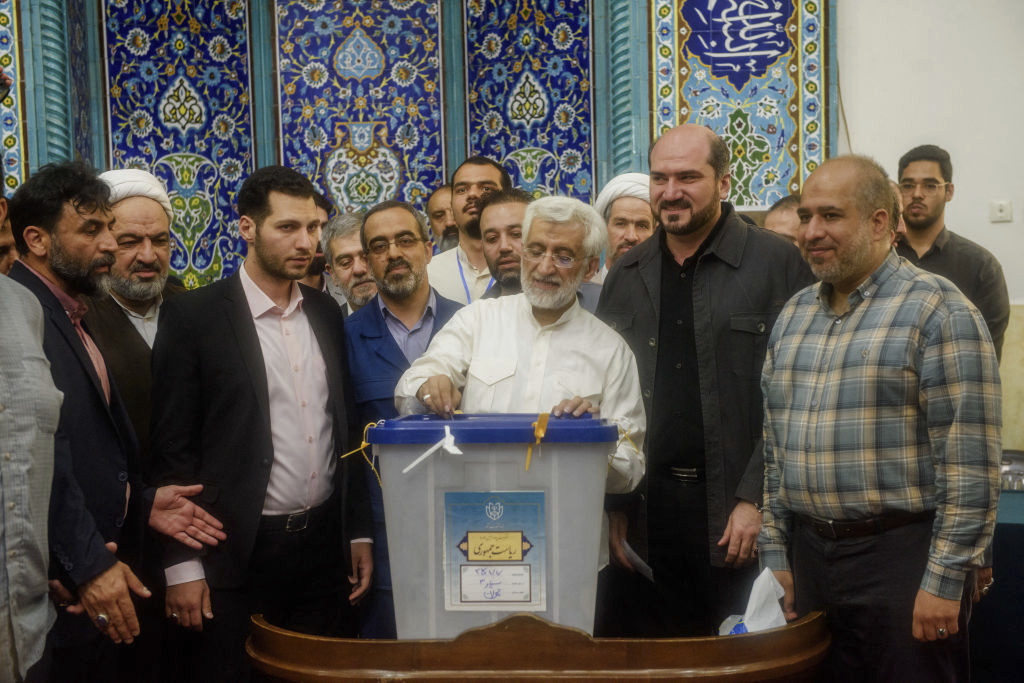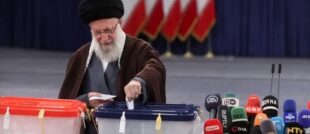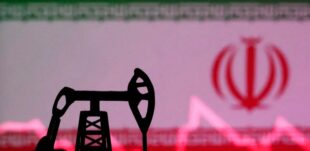gatestoneinstitute.org – All candidates are career government employees molded by the same ideology and committed to “total and absolute obedience” to the “Supreme Guide”.
This time, we don’t even have the usual Punch-&-Judy show by “Reformists” and “Fundamentalists.”
However, the campaign has thrown a grenade in Iranian political life by presenting immigration, in the words of Gen. Muhammad Baqer Qalibaf, one of the wannabes, as “the root-cause of all major problems the nation faces.”
Qalibaf hasn’t offered a shred of evidence to back his claims. Nor has the government of which he has been a part for 40 years produced a single serious report on Afghan immigrants in Iran.
The fact, however, is that no Afghan has been involved in any of the 22 terrorist attacks that Tehran has attributed to ISIS since 2019.
Tehran supported various anti-Taliban armed groups and, once the US-backed Islamic Republic was placed in Kabul, became the third-largest donor of aid to the Karzai-Ghani regimes. For about a decade, the flow of refugees was reduced to a trickle.
The flow intensified again after the Taliban returned to power in August 2021. Surprisingly, since then, trade between the two neighbors has picked up. Last year, Afghanistan was Iran’s second-largest trading partner and foreign investor.
And yet, pressure on Afghan refugees in Iran has intensified. At least 6,000 are currently in prison on various charges while many more are subjected to daily insults, intimidation, semi-official racketeering, eviction and unpaid wages.
Even worse, at least 300,000 children, many of them third- or fourth-generation immigrants, are denied access to schooling because they lack official papers necessary.
The manner in which most Afghan immigrants are treated violates Iran’s laws.
The 1934 Nationality and Naturalization Act bases the granting of Iranian nationality on the “blood and soil” principle, under which anyone born of Iranian ancestry and anyone born on Iranian soil could demand naturalization as a citizen. Foreign women married o Iranian men automatically become Iranian along with their children.
Yet according to official surveys some 100,000 Afghan women married to Iranians and over 300,000 of their children are categorized as stateless.
The irony is that Afghans are the closest people to Iranians. Part of what became Afghanistan was separated by the British with the Paris Treaty of 1857, in a process that during the notorious Great Game finally put Afghanistan on the map as a buffer state in 1879.
Thus, a judicious reading of the 1934 Act could enable many Afghans to claim citizenship based on common ancestry.
It is sad that the candidates in the Islamic Republic election ignore Iran’s own laws, traditions and cultural values.

On June 28, million of Iranians voted to elect a new president of the Islamic Republic from among six pre-approved candidates in a first round.
It isn’t clear how many of those eligible to vote, including those in exile, registered to do so.
The early election caused by the death of President Ayatollah Dr. Sayyed Ibrahim Raisi in a helicopter crash, and the brief campaign have offered little opportunity for would-be voters to assess the candidates.
All candidates are career government employees molded by the same ideology and committed to “total and absolute obedience” to the “Supreme Guide”.
This time, we don’t even have the usual Punch-&-Judy show by “Reformists” and “Fundamentalists.”
Unlike in previous elections, none of the candidates is regarded by Western pundits as an Iranian version of Janos Kadar, the Hungarian leader whose “goulash Communism” softened the image of the Stalinist regime. Nor is there a putative Iranian Deng Xiaoping, the Chinese leader who successfully steered the Communist regime towards state capitalism. Finally, this time even Jack Straw cannot discover an Iranian Gorbachev, the Soviet leader whom Margaret Thatcher thought she should drag to a tango.
All six candidates pledged to “continue martyr Raisi’s shining path” and repeated promises such as offering free housing that were given by the late Ayatollah Ruhallah Khomeini, the founder of the Islamic Republic, almost half a century ago and echoed by all eight Islamic presidents Iran has experienced since.
It would, therefore, be easy to dismiss the whole rigmarole with a “been there, seen that, bought the T-shirt” quip.
However, the campaign has thrown a grenade in Iranian political life by presenting immigration, in the words of Gen. Muhammad Baqer Qalibaf, one of the wannabes, as “the root-cause of all major problems the nation faces.”
“Afghan immigrants are damaging Iran in many ways, notably drug smuggling, taking jobs from the nationals and engaging in crime.”
Qalibaf promised that, if elected, he would build a wall to seal off Iran’s frontiers with Afghanistan and Pakistan, a total of 1,831 kilometers. Qalibaf hasn’t offered a shred of evidence to back his claims. Nor has the government of which he has been a part for 40 years produced a single serious report on Afghan immigrants in Iran.
Masoud Pezeshkian, another candidate, also talked of “completely sealing off the eastern borders “to prevent Afghans from coming to Iran”.
He suggested that Iran adopt Turkey’s policy of blackmailing the European Union to pay for Syrian refugees and ask the EU to make a similar deal with Iran on Afghan refugees.
Turkey, of course, has already built a 310-kilometer wall to seal its border with Iran, ostensibly to keep out Kurdish “terrorists” but also to forestall a flood of Afghans expelled from Iran.
Another candidate, Hojat al-Islam Mostafa Pour-Muhammadi, branded Afghans as a threat but suggested that those who belong to the Hazara community, being Shi’ites and Persian-speakers, receive a better treatment, along with Afghans recruited by the late Gen. Qassem Soleimani to keep President Bashar al-Assad in power in Damascus. Soleimani had also promised to offer those Afghans Iranian citizenship and tracts of land to “build a new life” in Iran.
The other three candidates, including Saeed Jalili, leader of the “North Koreans of Islam”, have cast Afghan immigrants as a security threat because they could be wooed by ISIS and kindred terrorist groups.
The fact, however, is that no Afghan has been involved in any of the 22 terrorist attacks that Tehran has attributed to ISIS since 2019.
Figures concerning the number of Afghan refugees vary from 800,000, given by the United Nations’ High Commission for Refugees (UNHCR) and 5.2 million claimed by Iran’s Interior Ministry.
The first wave of refugees, a few hundred, arrived in 1973 after Muhammad Daoud Khan staged a coup to depose king Muhammad Zahir Shah. Mostly high former officials and intellectuals and their families, those asylum seekers quickly received residence permits or gradually left Iran for Europe and the United States.
Five years later, the Communist coup in Kabul pushed thousands of asylum-seekers to Iran. They, too, were mostly regularized under Iranian laws effective during the constitutional monarchy.
During the Afghan civil war, the flow of refugees continued with varying degrees of intensity. By the time the Taliban were out of Kabul, more than 3.5 million Afghan refugees had entered Iran, many using it as a stopping point on the way to other countries.
Tehran supported various anti-Taliban armed groups and, once the US-backed Islamic Republic was placed in Kabul, became the third-largest donor of aid to the Karzai-Ghani regimes. For about a decade the flow of refugees was reduced to a trickle.
The flow intensified again after the Taliban returned to power in August 2021. Surprisingly, since then, trade between the two neighbors has picked up. Last year, Afghanistan was Iran’s second-largest trading partner and foreign investor.
And yet, pressure on Afghan refugees in Iran has intensified. At least 6,000 are currently in prison on various charges, while many more are subjected to daily insults, intimidation, semi-official racketeering, eviction and unpaid wages.
Even worse, at least 300,000 children, many of them third- or fourth-generation immigrants, are denied access to schooling because they lack official papers necessary.
The limbo created means that many Afghans cannot fully own businesses, have bank accounts or even buy mobile phone SIM-cards.
The manner in which most Afghan immigrants are treated violates Iran’s laws.
The 1934 Nationality and Naturalization Act bases the granting of Iranian nationality on the “blood and soil” principle, under which anyone born of Iranian ancestry and anyone born on Iranian soil could demand naturalization as a citizen. Foreign women married o Iranian men automatically become Iranian along with their children.
Yet according to official surveys, some 100,000 Afghan women married to Iranians and over 300,000 of their children are categorized as stateless.
The irony is that Afghans are the closest people to Iranians. Part of what became Afghanistan was separated by the British with the Paris Treaty of 1857, in a process that during the notorious Great Game finally put Afghanistan on the map as a buffer state in 1879.
Thus, a judicious reading of the 1934 Act could enable many Afghans to claim citizenship based on common ancestry.
It is sad that the candidates in the Islamic Republic election ignore Iran’s own laws, traditions and cultural values. They imitate the US, Turkey, Hungary, Poland and Thailand by building walls while echoing the anti-immigrant tune that has poisoned political discourse in France, Britain and Germany.
Amir Taheri was the executive editor-in-chief of the daily Kayhan in Iran from 1972 to 1979. He has worked at or written for innumerable publications, published eleven books, and has been a columnist for Asharq Al-Awsat since 1987. He is the Chairman of Gatestone Europe.
This article originally appeared in Asharq Al-Awsat and is reprinted with some changes by kind permission of the author.
 Shabtabnews In this dark night, I have lost my way – Arise from a corner, oh you the star of guidance.
Shabtabnews In this dark night, I have lost my way – Arise from a corner, oh you the star of guidance.



